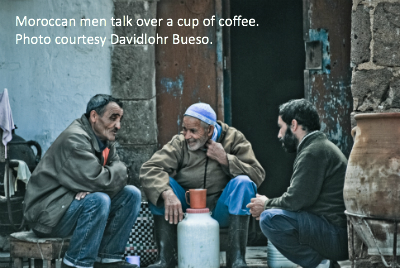CVT Jordan: Using Stories to Break Silence

Torture and war can have a negative effect on communication within a family. To address this, CVT staff in Jordan conducted innovative storytelling counseling sessions with two groups of fathers and teenagers. The theme focused on “breaking the silence” to help improve communication among Iraqi refugees who have survived torture and war trauma. Silence and miscommunication continued to jeopardize their healing even after receiving in-depth trauma therapy from CVT. Psychotherapist, Muriel Genot and psychosocial counselors Insherah Mousa, Maysa’ Alhmouz, and Mohammed Taha joined the groups and participated in the brainstorming and decision-making process, which was conducted by voting. A professional storywriter also took part in three of the sessions.
The two groups worked in parallel for 12 sessions each, and had 3 phases:
- Preparation Phase: Identifying areas of silence and disconnections and their effects on individuals and families that was the content of the story.
- Writing the story.
- Reflection on the process and the stories.
There were 11 fathers, between 30-50 years old, and 10 teenagers, mostly males, between 11-14 years old. All of them had completed counseling sessions and most had completed their one-year follow up. The two groups were divided into smaller groups and elements from all of them were gathered to form the stories. At the end of the session the two groups read their stories to each other. The process of developing the two stories helped the participants to talk about their pain and encouraged active participation. Communication between the fathers and their children also improved. It was interesting to see how both groups were able to accurately identify the placements of silence and miscommunication in the other group’s story. The two groups agreed to put the stories in one booklet titled Between Two Generations, with illustrations for each story. One of the female teenagers helped to draw the fathers’ group story and an Iraqi female professional artist helped to draw the teenagers’ story. The stories will be printed and distributed among the participants and can be used as therapeutic tools for CVT’s group counseling sessions in the future.
Here are a few responses from fathers who participated in this unique approach:
One of the fathers who took part in the storytelling session said, “CVT is like a mother you seek to tell about your trouble.” He also said, “The group was brilliant, and helped me to reduce smoking.”
“.مركز ضحايا التعذيب مثل أم نلجأ إليها لنفضفض همومنام”
“.المجموعة رائعة، وساعدتني في الإقلال من التدخين”
Another father who had a traumatic experience during the phase of writing the story said that “by participating in the writing process I released most of my pain regarding that personal event”.
” المشاركة في كتابة القصة ساعدتني كثيرا على التعبير عن الألم الذي شعرت به بعد هذا الحادث “
One of the fathers in the combined session said that “we are proud that our children are sitting with us and sharing their opinions, this is by its self a break to the silence and a rebuild of connections”
” نحن فخورين بأن أبناءنا جالسون معنا و يناقشون ويعطون آراءهم ، هذا بحد ذاته كسر للصمت و تمتين للروابط “